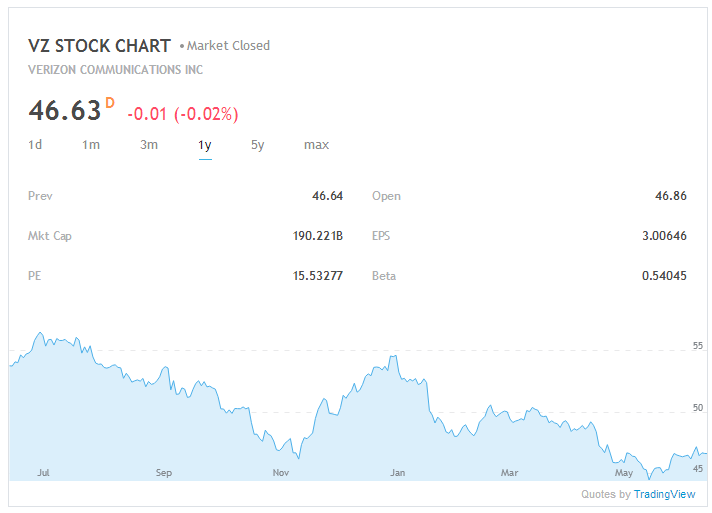Yahoo (NASDAQ:YHOO) Incorporated was once an American multinational technology company. But not anymore.
On Tuesday earlier this week Verizon Communications (NYSE:VZ) officially closed the deal buying up Yahoo’s internet properties in a long awaited acquisition worth nearly $4.5 billion. Yahoo’s CEO Marissa Mayer, who was at the helm of Yahoo’s is reported to receive a golden parachute of just over $23 million as she steps down after the deal. She served at Yahoo’s helm for five years. Due to the disclosure of multiple massive hacks into Yahoo customer accounts, Verizon lowered its bid from 4.8 billion dollars to 4.48 billion dollars. Furthermore, this is on top of an astounding CEO turnover rate and a questionable management decisions.
Unfortunately more than two thousand employees of Yahoo will be laid off as Yahoo and AOL reorganize under Verizon’s management. Yahoo and AOL will combine as part of a new media and technology company called Oath. Tim Armstrong, the former chief executive of AOL, will be leading the new operation of Oath. “Now that the deal is closed, we are excited to set our focus on being the best company for consumer media, and the best partner to our advertising, content and publisher partners,” he explains.
Yahoo’s core internet business is Verizon’s ongoing play to extend its digital media presence and break into the digital advertising market where it is currently dominated by two major players – Google (NASDAQ:GOOGL) and Facebook (NASDAQ:FB). Mergers and acquisitions are a great way for companies to grow if they can’t gain the momentum organically. The economy still appears to be weak despite optimism from the Federal Reserve.
The Fed’s key interest rate will now hover in a range between 1% and 1.25%. Overall, rates are still very low compared to prior decades. The Fed also said it’s planning to start gradually selling off the assets that it had bought during and after the financial crisis to boost the economy.
Last Thursday, the Fed raised its key interest rate for the third time in only half a year to a range of 1.00 percent to 1.25 percent. The Chairwoman, Janet Yellen, spoke about the changes as follows. “The Federal Open Market Committee decided to raise the target range of the federal funds rate by 0.25% point.” She goes on to say, “Our decision to make another gradual reduction in the amount of policy accommodation reflects the progress the economy has made and is expected to make towards maximum employment and price stability objectives assigned to us by law.” She did add one cautionary sentiment near the end however. “Nonetheless, in light of the softer recent inflation readings, the committee is monitoring inflation developments closely.”
The inflation rate in the U.S., as measured by CPI, is currently about 1.9%. But depending on where consumers live, their personal wallets could be affect by much more.
One reason is because some products, especially certain food items, are not included in the CPI measurements. Other countries such as Canada work in similar ways. “If Canadians are thinking there’s an inconsistency between what’s being reported by CPI and what they see in grocery stores, there may be some truth to that,” said Sylvain Charlebois, dean of Dalhousie University’s Faculty of Management and a recognized expert on food prices. The official overall cost of living was 1.6% higher in April 2017 than in April 2016. But Charlebois’ conducted a study which showed the cost of food has risen by more. “We suspect that food inflation in Canada right now is north of 5 per cent for sure,” Professor Charlebois said.

